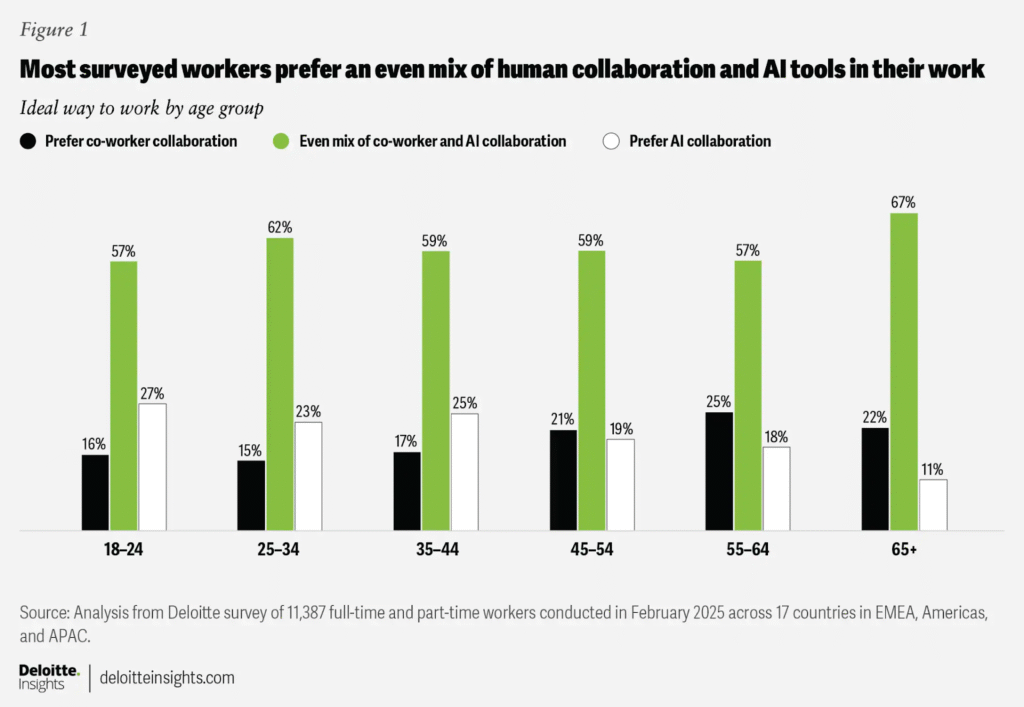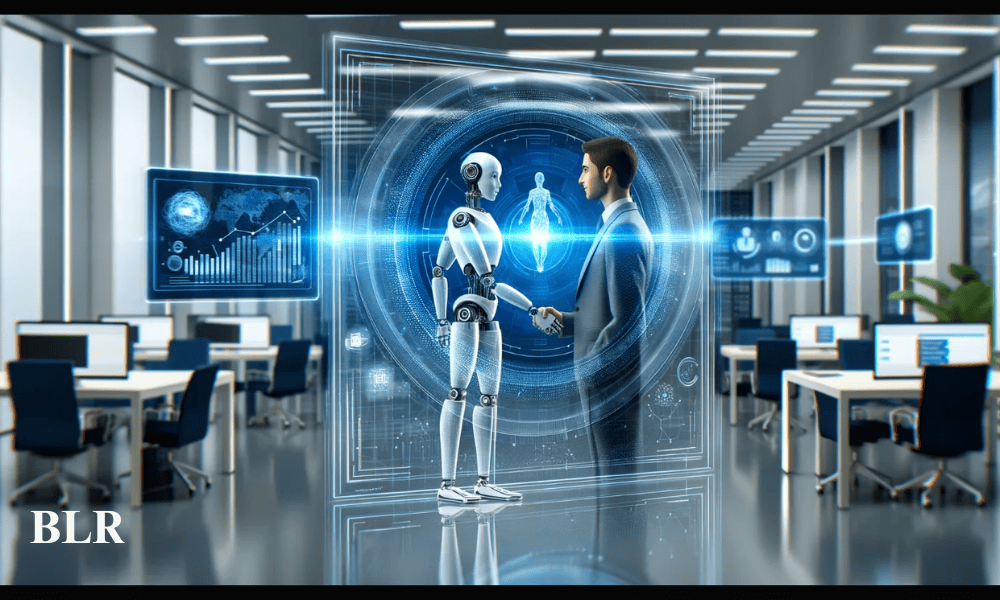The world of work is rapidly changing. Between falling birth rates, aging populations, and new technologies redefining how tasks are done, many organizations are at a crossroads. How do we harness AI in the workplace to not only maintain productivity but also make sure people stay central? How do demographic shifts and labor market realities intersect with how AI is reshaping the workforce?
This article explores those questions and lists out strategies to close workforce skill gaps, address the future of entry-level jobs in the AI era, and adapt to the impact of demographic shifts on jobs.
What is Driving the Change?
Two primary forces fuel the transformation of work: demographic realities and technological acceleration. These shifts are not isolated—they overlap, creating challenges and opportunities for employers.
The Demographic Shifts Reshaping Labor Markets
Populations are aging, and younger cohorts entering the workforce are shrinking. This trend affects both the availability of talent and the structure of the labor market.
- Globally, more experienced workers are reaching retirement age. By 2030, one in six people will be over 60.
- Fewer new entrants are coming in. In the U.S., high school graduates are expected to peak around 2025 and then decline, shrinking the talent pool.
- Some sectors, like construction, hospitality, and healthcare, are more affected by shortages of front-line roles that require in-person presence and hands-on work.
How AI Is Reshaping the Workforce
Artificial Intelligence is not just enhancing workflows; it is redefining them. Organizations are now faced with the question of where to deploy AI for efficiency and where to rely on human expertise.
- Routine, repetitive tasks are increasingly automated, changing how businesses allocate human effort.
- “Agentic AI” (AI that acts autonomously or semi-autonomously) is growing, raising new governance and oversight challenges.
- Entry-level jobs are under pressure, as many traditional administrative and support functions are being automated.
Human and AI Collaboration – A New Normal
AI does not replace human ingenuity; it complements it. The future lies in human and AI collaboration, where the unique strengths of each are combined.
Workers across all age groups are showing interest in this hybrid approach, though perceptions differ: younger professionals value the speed AI brings. At the same time, experienced employees emphasize the quality of human judgment. This balance is shaping how tasks are allocated in modern organizations.
- Most workers prefer a mix of human and AI collaboration rather than AI-only or human-only models.
- Perceptions of speed versus quality differ across generations, with AI often linked to speed and humans to quality.

Deloitte Survey Analysis on Human and AI Collaboration at the Workplace (Image Credit: DeloitteInsights)
Key Challenges and Opportunities
Organizations face several pressing challenges as AI adoption collides with demographic realities. Yet within these challenges lie opportunities for smarter design of work and better support for employees.
Skill Gaps and Entry-Level Jobs in the AI Era
The erosion of traditional entry-level roles is one of the most significant shifts in today’s labor market. As AI takes on routine functions, new workers may struggle to gain early experience.
- Entry-level opportunities are shrinking, making career pathways less accessible for younger generations.
- AI can, however, act as an upskilling tool by providing real-time coaching, feedback, and adaptive learning opportunities.
Impact of Demographic Shifts on Jobs
Demographic changes are reshaping not just the availability of labor but also the nature of institutional knowledge within organizations.
- Workforce participation declines in mature economies, leading to labor shortages in essential in-person roles.
- Knowledge gaps grow as experienced workers retire, putting pressure on organizations to capture and transfer expertise before it’s lost.
Strategies to Close Workforce Skill Gaps and Drive Transformation
Addressing the above-discussed challenges requires proactive strategies. Organizations that succeed will not only adopt AI but also rethink how humans, machines, and processes intersect.
1. Embed AI Fluency and Upskilling
Building AI literacy is critical for all workers, not just new hires. Training programs must empower employees at every level to understand and work with AI systems effectively.
- Develop training initiatives that demystify AI and highlight practical applications.
- Use AI-based platforms to provide real-time coaching, accelerating learning across teams.
2. Redefine Entry-Level Roles and Learning Pathways
As automation changes entry-level work, organizations must intentionally redesign career starting points. The goal should be to provide learning, growth, and progression opportunities.
- Balance automation with tasks that foster learning and professional development.
- Establish mentorship and apprenticeship programs, supported by AI matching tools, to guide early-career employees.
3. Design Human-Machine Collaboration Thoughtfully
Human-machine collaboration should be more than incidental. It requires deliberate planning. Clearly defining roles enhances productivity and trust.
- Establish guidelines for when tasks should be human-led, AI-driven, or collaborative.
- Restructure teams to integrate AI as a functional teammate rather than just a background tool.
4. Support Knowledge Transfer and Mentorship
As older workers retire, organizations must safeguard valuable institutional knowledge. AI can play a role in preserving and sharing this expertise.
- Leverage AI platforms to facilitate mentorship and cross-generation learning.
- Create systems to capture and codify best practices, ensuring continuity.
5. Forecast Workforce Transformation
Future-ready organizations anticipate change rather than react to it. Scenario modeling and workforce planning allow businesses to prepare for multiple outcomes.
- Conduct workforce forecasts to predict skill needs as demographics and AI adoption evolve.
- Model scenarios to account for labor shortages, technology shifts, and new role creation.
Entry-Level Outlook and Workforce Transformation
The future of entry-level jobs in the AI era will not be defined by the disappearance of opportunities but by their evolution. New entry-level roles may be more complex, requiring higher levels of adaptability and digital fluency from the start.
Organizations that prioritize workforce transformation—blending technology adoption with human development—will be better positioned to weather demographic pressures and technological disruption. The impact of demographic shifts on jobs underscores the urgency of acting now.
Shaping the Future of Work
Leaders can ensure the workforce thrives in the decades ahead by fostering human and AI collaboration, investing in skills, and designing resilient strategies.
For business leaders, HR professionals, and policymakers alike, the future isn’t about choosing between humans and machines—it’s about designing a future where both work together to build stronger organizations and a stronger Economy.
To explore more on how Artificial Intelligence and Technology are reshaping the workforce, keep following our insights.


